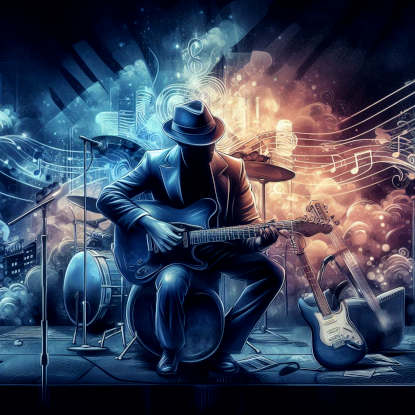
Blues Radio - Log In to start the player
Blues music, born in the early 20th century among African Americans in the American South, weaves a soulful tapestry of emotion, rhythm, and storytelling. Its influence extends far beyond its humble origins, shaping genres like jazz, rhythm and blues, rock, and country music across the United States.
Origins and Essence
The specific birthplace of blues remains elusive, but its roots lie in the spirituals, work songs, and field hollers of former slaves. The blues is fundamentally a vocal form, where singers express feelings rather than narrate stories. Themes of love, oppression, and hardship resonate through its lyrics. Melisma—a technique of sustaining a single syllable across several pitches—imbues blues vocals with raw emotion. Syncopation and instrumental techniques like bending guitar strings or using a bottleneck create a distinctive, soulful sound.
Structure and Harmony
Blues songs typically follow a three-line textual stanza (AAB) and a 12-measure form. The first two and a half measures focus on singing, while the last measure and a half feature an instrumental "break." Harmonically, the simplest blues progression involves the tonic, subdominant, and dominant notes of the scale. This progression underpins countless blues classics, evoking both sorrow and resilience.
Legacy and Influence
By the 1960s, the blues had become a cornerstone of American music. Artists like B.B. King, Stevie Ray Vaughan, and Aretha Franklin carried its torch, infusing their work with its spirit. Whether in smoky juke joints or grand concert halls, the blues continues to resonate, reminding us of our shared humanity and the power of music to heal and connect.
In this rich tapestry of sound, the blues remains timeless—a testament to the resilience of the human spirit and the enduring magic of heartfelt expression













